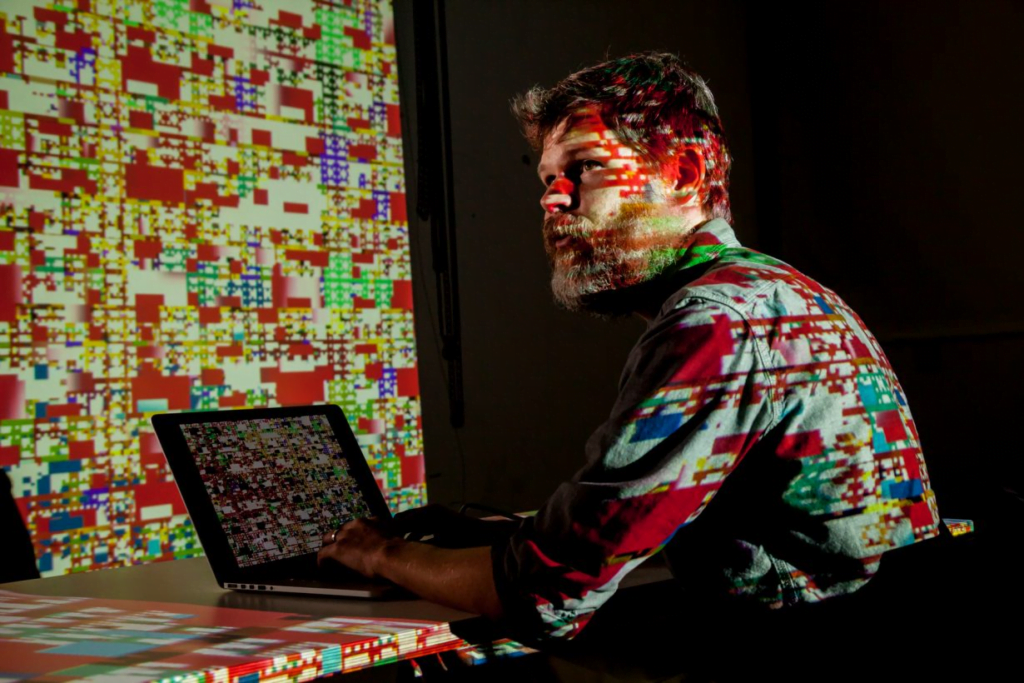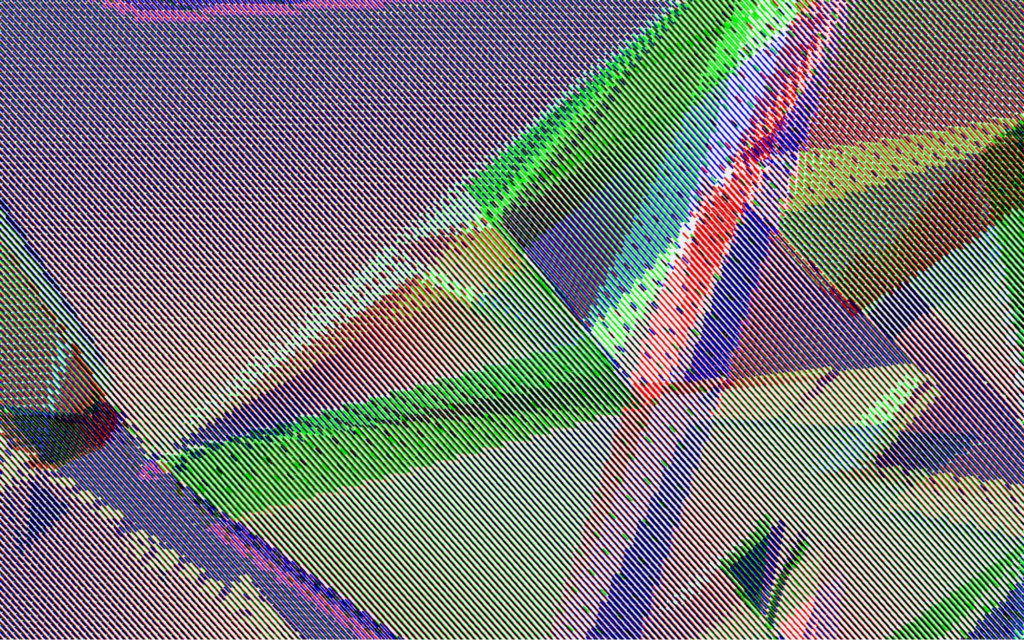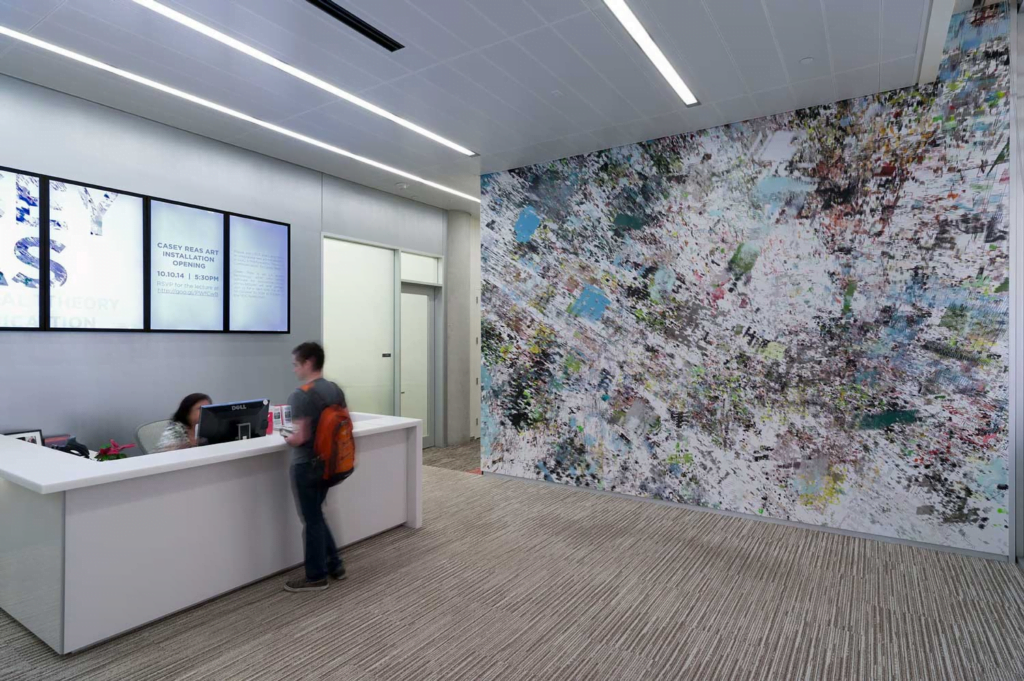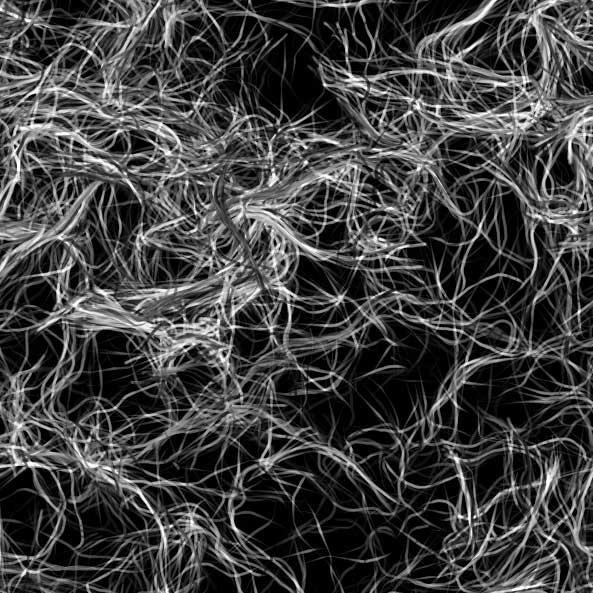Casey Reas BIOGRAPHY

Early Life and Education of Casey Reas
Casey Reas was born in 1972 in Ohio. He earned his BFA from the University of Cincinnati’s College of Design in 1993.
Reas pursued graduate studies at the MIT Media Lab from 1994 to 1996, where he researched how to apply software and systems to generate visual forms. His thesis project, titled “Software Structures,” explored how software can be used as a medium for graphic creation.
2001 Reas co-founded Processing, an open-source programming language and integrated development environment (IDE) built for electronic arts, new media art, and visual design. Processing makes it easy for people to code animations, interactive art, and graphic designs. Over time, Processing has become a worldwide community focused on teaching code within the context of art and design.
Reas joined the faculty of UCLA Design Media Arts in 2003, where he currently serves as a professor. His creative work uses software and systems to explore the relationship between sound, light, space and form.
What is Casey Reas known for?

One pioneer in this field is Casey Reas, a computational artist exploring the intersection of software and visual art for over 20 years. Reas is a leading figure in the Processing software project, which he co-created in 2001 to help non-programmers create visual artwork through code. The accessibility of Processing has inspired artists, designers, and students worldwide to learn programming in a visual context.
Career highlights

Reas’ Introduction to Programming and Generative Art
Reas initially studied architecture and sculpture but became fascinated with the creative potential of code. He learned programming languages like C++, Lingo, and Max/MSP/Jitter, which allowed him to explore algorithmic and generative approaches to image-making and sound generation.
In the mid-1990s, Reas started creating abstract motion graphics and visuals for electronic music events in the Los Angeles area. He co-founded the art collective and record label CalArts/REDCAT. Reas connected with other artists through these creative communities, experimenting with technology, code, and generative systems.
In 2001, Reas co-created Processing with Ben Fry as an MIT Media Lab graduate student. Processing is a programming language built for electronic arts, new media art, and visual design. It has enabled thousands of students, artists, designers, researchers, and hobbyists to create software-based art, design, and visual culture.
Reas’ work explores the relationship between software, code, and visual form. His prints, objects, and installations investigate self-generating systems that emerge from simple rules and parameters. Reas sees code and computation as a medium for esthetic and cultural exploration. His art examines the expressive potential of logical and mathematical systems.
Founding Processing and Teaching at UCLA
Casey Reas is best known as the co-creator of Processing, an open-source programming language and environment used by visual artists, designers, and researchers. 2001 Reas and Benjamin Fry developed Processing while graduate students at the MIT Media Lab. They built the software to teach programming within a visual context and to make coding more accessible to artists and designers.
Reas and Fry created Processing in 2001 to teach programming to artists and designers. Students, artists, designers, architects, researchers, and hobbyists use the software for learning, prototyping, and production.
Processing strives to make coding accessible to beginners through a simplified programming syntax, a graphics-oriented display window, and an easy-to-understand set of libraries for creating 2D and 3D imagery, animations, and interactivity.
Reas joined the Design Media Arts faculty at UCLA as an Associate Professor in 2008. At UCLA, he teaches programming, motion graphics, visual design, and information visualization. His teaching and research focus on exploring software as a medium for art and design. Reas sees software and computation as artistic materials to manipulate, shape, and organize. He is interested in how software can be crafted and designed to create unexpected and meaningful experiences.
Casey Reas List of Work

Reas’ artwork uses software and computation as a medium to explore connections between logic and intuition. His projects often start with a simple algorithm or system that develops organically through experimentation and discovery. The results are visualizations and installations that invite open-ended exploration.
Reas sees his creative work as an extension of his teaching and an opportunity to continue learning. His art allows him to grapple with ideas that are challenging to address through words alone.
Major Art Exhibitions and Installations
Casey Reas is known for creating artwork with custom software that he designs. His installations and exhibitions featuring generative art have been displayed in numerous renowned galleries and institutions worldwide.
2004 | The Whitney Biennial | Reas exhibited interactive software he created at the Whitney Biennial in New York. The software generated abstract forms with organic movement that evolved. Viewers could manipulate parameters to alter the visuals. This innovative generative artwork demonstrated Reas’ pioneering use of software as a creative medium. |
2001 | Bitforms Gallery | Reas has had multiple solo exhibitions at Bitforms Gallery in New York. His shows explored generative systems, resulting in prints, objects, and real-time software. In 2015, his “Fathom” exhibition featured aquatic-themed prints and sculptures created through algorithms designed by Reas. The works elicited a sense of endless depth and mystery. |
2007 | San Jose Museum of Art | Reas’ first major museum exhibition was held. “Process Compendium” spanned ten years of his artistic practice. The show included prints, objects, video documentation and interactive software that visualized Reas’ conceptual and technical process. Reviewers praised the exhibition for offering insight into Reas’ innovative, creative methodology through code and algorithms. |
1985 | Center Pompidou | Reas’ work was included in the group show “Les Immatériaux” at the Center Pompidou in Paris, France. Curated by philosopher Jean-François Lyotard, the exhibition investigated the relationship between art and technology. Reas contributed an artificial life system called “Ecosystem,” which generated abstract animations. |
Reas has cemented his role as a pioneer in the field of generative art through these groundbreaking exhibitions and installations. His work provides a glimpse into the possibilities of software as an artistic tool for visual creation and discovery. Reas continues to push the boundaries of computational art and inspire new generations of artists working with code.
Major Accolades
Reas has won numerous awards and honours for his work, including:
Golden Nica from Ars Electronica
Transmediale International Media Art Festival Award
Art Director’s Club Hall of Fame Award
Follow Casey Reas on social media
Instagram: https://www.instagram.com/reas/
Twitter: https://twitter.com/REAS

